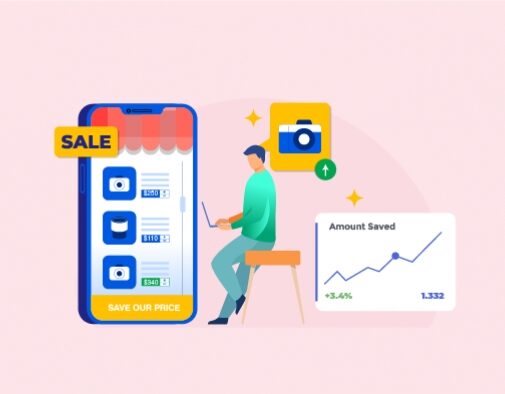Edit Content
In the cutthroat world of ecommerce, price remains a battleground. Price comparison websites (PCWs) empower shoppers to find the best deals, forcing retailers into a constant price optimization dance. Enter dynamic pricing algorithms on PCWs – a technology promising automated price adjustments to maintain a competitive edge. But is it a strategic step towards profitability, or a race to the bottom? Let’s delve into the data.

Real-Time Competitor Intelligence: Dynamic pricing algorithms continuously monitor competitor pricing on PCWs. This grants you real-time insights, allowing for swift adjustments to stay competitive without dedicating manpower to manual monitoring. Imagine you sell electronics. A dynamic pricing algorithm can track price fluctuations on a popular PCW for your flagship smartphone model. If a competitor suddenly drops their price, the algorithm can notify you and suggest a strategic counter-response.
Peak Demand Optimization: These algorithms analyze market trends to identify periods of high demand. This empowers you to strategically raise prices and maximize profits during peak buying seasons. For instance, if you sell sporting goods, the algorithm can identify surges in demand for athletic wear leading up to a major marathon. You can then adjust prices accordingly to capitalize on this seasonal trend.
Data-Driven Discount Responses: When competitors offer discounts, dynamic pricing helps you formulate a data-driven response. You can adjust prices to attract budget-conscious customers while safeguarding your profit margins. Let’s say a competitor on a PCW launches a flash sale on a specific brand of headphones you also carry. Your dynamic pricing algorithm can analyze the discount depth, your own inventory levels, and historical sales data to suggest a counter-offer that remains profitable yet competitive.

Price Wars and Brand Erosion: Constant price adjustments can ignite endless price wars with competitors. This can ultimately damage your brand image and erode long-term profitability. Imagine constantly undercutting a competitor on a particular product category. While you might win some sales initially, this strategy can lead to customers associating your brand solely with low prices, making it difficult to establish value and command premium pricing in the future.
Customer Frustration and Cart Abandonment: Imagine a customer finding a great deal on a PCW, only to see the price jump at checkout. This can lead to frustration and cart abandonment. Transparency is crucial to mitigate this. Be upfront with customers about your use of dynamic pricing. Clearly explain the factors that influence price adjustments and consider offering a grace period for customers who add items to their cart at a specific price point.
Over-reliance on Automation: While algorithms are powerful tools, relying solely on them can be risky. They may not account for factors like brand value and customer loyalty, which are crucial for building a sustainable business. Don’t let the algorithm dictate your entire pricing strategy. Consider the bigger picture and incorporate elements like brand positioning and customer lifetime value into your pricing decisions.

A Strategic Approach is Key:
Targeted Experimentation: Begin by testing dynamic pricing on a limited set of products, such as seasonal items or those with high price elasticity (meaning demand is highly sensitive to price changes). Analyze the data to assess its impact on sales and profitability before making a wider rollout.
Maintain Control with Parameters: Don’t be dictated solely by the algorithm. Set clear parameters for price adjustments to avoid aggressive undercutting and maintain healthy margins. For instance, you can instruct the algorithm to only adjust prices within a specific range or to prioritize maintaining a minimum profit margin over chasing the absolute lowest price.
Transparency Fosters Trust: Inform customers about your use of dynamic pricing. This builds trust and reduces the chance of frustration. Consider including a disclaimer on your product pages or shopping cart explaining how dynamic pricing works and the factors that influence price adjustments.
Beyond the Algorithm: A Holistic Ecommerce Strategy for Success
Dynamic pricing can be a valuable tool in your arsenal, but it’s not a standalone solution. Here’s how to create a winning ecommerce strategy:
Develop a Strong Brand Identity: Go beyond just price. Craft a unique brand that resonates with your target audience. Focus on customer experience, product quality, and exceptional service. Let’s say you sell athletic wear. Don’t just compete on price – position your brand around ethical sourcing, sustainable materials, or high-performance design to differentiate yourself from competitors relying solely on aggressive pricing.
Data-Driven Marketing: Leverage customer data to personalize marketing campaigns and target the right audience with the right offers. This increases conversion rates and customer lifetime value. For instance, analyze customer purchase history and browsing behavior to send targeted email campaigns with personalized discounts or product recommendations.
**Invest in Customer Loyalty













Missing an important marketplace?
Send us your request to add it!